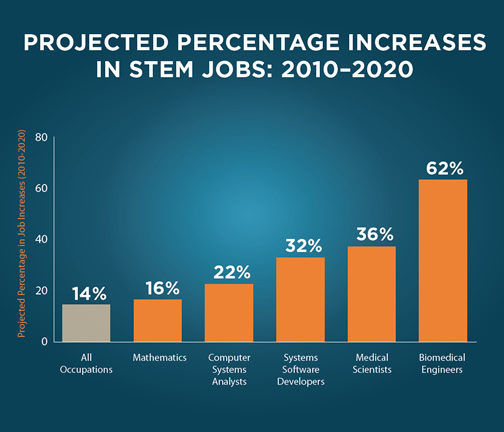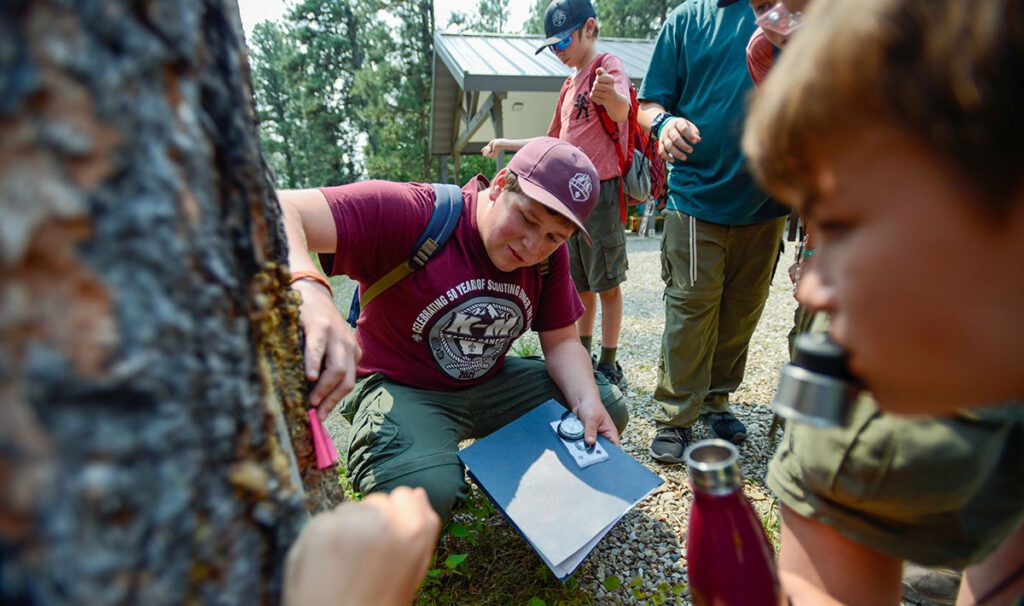The world has recognized the importance of science, technology, engineering and mathematics (STEM) for a while now; most of history’s life-changing innovations have come from research and development in STEM fields. In 2007, a Carnegie Foundation commission of distinguished researchers concluded that a vibrant, democratic society’s capacity to thrive in the modern workforce depends on a firm foundation in scientific and mathematical learning.
As technology becomes more integral to our everyday lives, STEM jobs are projected to continue increasing at an incredible rate. Earned STEM degrees are increasing at a similar pace, and careers in STEM have proven to be profitable and fulfilling professional paths for many young adults and college graduates.

The popularity of technology in today’s world, as well as the availability of educational resources in science and math, are drawing more and more people to STEM — kids included. But it’s not just those old enough to consider their college major or career; the U.S. Department of Education strives to improve STEM instruction starting in preschool.
Benefits of STEM Learning
Much like BSA, STEM learning is rooted in exploration — nurturing the natural curiosity that drives individuals to explore, observe, interact and discover. As you’ve probably already figured out, kids ask a lot of questions — and it’s important to give them the skills necessary to answer these questions in the future. Science and math learning creates the foundation for experimentation, so children are able to work toward a solution and understand the process of coming to an answer.
Humans learn by building on top of these foundations, applying previously-mastered concepts to understand more complicated ones. Math concepts in particular often build on earlier skills — kids have to learn to count before they can start adding or subtracting. To use an analogy that would resonate with my peers today, learning is often the type of Netflix series you have to watch from the beginning in order to fully understand the jokes or story.

Another way math learning mimics learning in other capacities has to do with repetition, mastery and further application. Concepts found earlier in math class usually show up again as subroutine steps of later concepts, like arithmetic in algebra or statistics in calculus. By learning mathematical processes, individuals are not just identifying 4 as the answer to 2+2, but also strengthening their learning skills and ability to connect diverse concepts.
Skills learned in science class are almost just as widely applicable across all other curriculum. In a literal sense, kids learn skills necessary to use the scientific process: developing and investigating hypotheses, describing observations and conducting experiments. But these skills can also be applied in different environments, like in cooking, mechanics, gardening and camping.
What It Looks Like in Your Child
To encourage lifelong, systematic learning, it’s especially important to nurture a child’s natural curiosity before they’re five — at this age, kids are making nearly 700 neural connections every second, and you want to make sure that they have the proper foundation for success in the future.
But don’t panic if your kid is already a little older! We all know that natural curiosity sticks with ‘em, and it’s never too late to find new ways of developing their skills. In fact, kids have more and more opportunity to get involved in STEM-related activities, both in the classroom and outside the classroom.

Get Outside
One of the best ways for kids to apply STEM concepts is unstructured play outside, especially for the younger tots. As part of a regulated, educational system, it’s often difficult for kids to explore places and concepts at their own pace in school. Basically, it’s tough for kids to get the solo time to answer the questions they ask on their own.
But that’s where we come in! Extracurricular activities like Scouting don’t have the same structure as school does and, though we admit to having the occasional rigorous requirement, we also get kids outside more often than not — to explore both with the group and on their own.
As they get older, Scouts have the opportunity to learn specific STEM skills and earn merit badges to develop their understanding. Scouts can earn more than 135 different merit badges, including STEM-related themes like Chemistry, Environmental Science, Robotics, Model Design and Building, and Digital Technology. Those aren’t your typical subjects in school!
The Bottom Line
Ultimately, it comes down to letting kids explore their interests — something we’ve always valued in Scouting. We encourage STEM learning not just so your child can earn a merit badge (though we think that’s pretty cool, too), but so they develop a lifelong passion for learning and understand how to answer questions and come to conclusions. And if they grow up to be a researcher, computer programmer, engineer or even an astronaut, we can take pride in knowing that we encouraged them to do so.

Interested in Scouts? Fill out the form below!




